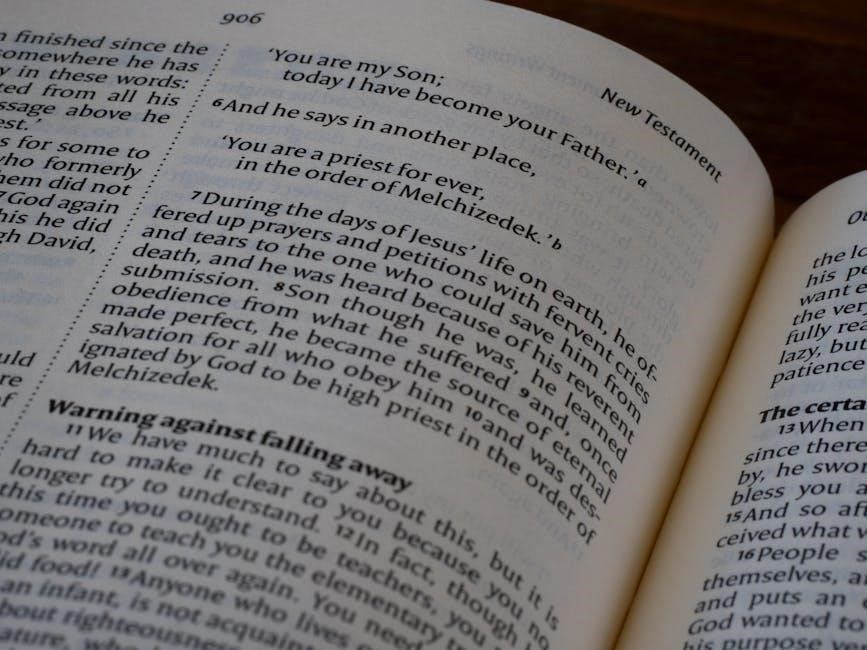1st grade reading passages are essential tools designed to help early learners develop foundational reading skills through engaging and educational content, often available in convenient PDF formats.
1.1 Importance of Reading Passages for 1st Graders
Reading passages are vital for 1st graders as they introduce foundational literacy skills, fostering a love for reading and learning. These texts help students recognize patterns, understand basic story structures, and develop phonological awareness. By engaging with age-appropriate content, young learners build confidence in decoding words and comprehension. Reading passages also encourage critical thinking and creativity while exposing students to diverse themes and vocabulary. Regular practice with these materials helps improve focus, fluency, and accuracy, setting the stage for long-term academic success. Additionally, interactive PDF formats make these passages accessible and engaging, allowing teachers and parents to support early reading development effectively.
1.2 Structure of a 1st Grade Reading Passage
A 1st grade reading passage is designed to be simple and engaging, typically featuring short sentences and basic vocabulary. These passages often focus on familiar themes, such as family, animals, or everyday activities, to resonate with young learners. The text is usually accompanied by colorful illustrations to aid comprehension and maintain interest. Structurally, the passage may include a clear beginning, middle, and end, introducing basic story elements like characters, settings, and simple plots. The language is intentionally repetitive and rhythmic to support phonological awareness and fluency. PDF formats often enhance this structure by incorporating interactive elements, such as clickable words or animations, making the content more accessible and engaging for early readers. This design helps students transition smoothly from learning to read to reading to learn.

Types of Reading Passages for 1st Grade
First grade reading passages come in various types, including fiction, non-fiction, and seasonal themes, all designed to enhance reading skills and engage young learners effectively.
2;1 Fiction Reading Passages
Fiction reading passages for 1st graders are engaging stories that spark imagination and curiosity. These passages often feature relatable characters, simple plots, and repetitive language to aid comprehension. Designed to captivate young learners, fiction stories help build vocabulary, improve fluency, and foster a love for reading. They typically include themes like friendship, adventure, or animal tales, making them appealing to children. By incorporating vibrant illustrations and predictable text structures, fiction passages make reading a fun and interactive experience. These stories also encourage creative thinking and help students develop critical thinking skills as they interpret events and characters. Fiction passages are a cornerstone of early literacy, providing both entertainment and educational value for 1st grade students.
2.2 Non-Fiction Reading Passages
Non-fiction reading passages for 1st graders introduce young learners to factual and informative content, helping them explore the world around them. These passages typically focus on topics like animals, seasons, or simple science, using language that is easy to understand. Non-fiction texts often include engaging visuals, such as photographs or diagrams, to support comprehension and make learning fun. They are designed to build vocabulary, improve reading skills, and spark curiosity about real-world subjects. By exposing students to factual information, non-fiction passages lay the groundwork for future academic success and encourage a habit of reading for knowledge. These passages are also structured to align with early curriculum goals, ensuring they are both educational and accessible for young readers.
2.3 Seasonal and Holiday-Themed Passages

Seasonal and holiday-themed reading passages for 1st graders are engaging tools that align with special times of the year, such as Christmas, Halloween, or Thanksgiving. These passages are designed to make learning fun and relevant, connecting reading practice with real-life experiences and cultural traditions. They often feature simple, relatable stories or factual content about holidays, seasons, or celebrations, making them appealing to young learners. Seasonal passages also provide opportunities to teach vocabulary related to specific events or themes, fostering comprehension and curiosity. By incorporating visuals and festive themes, these passages can capture students’ interest and make reading practice feel like a fun activity. They are ideal for classroom use or home practice, reinforcing learning in a structured yet playful way.
Benefits of Using 1st Grade Reading Passages
Fostering a strong foundation in reading and comprehension skills, 1st grade reading passages are vital for early literacy development, engagement, and lifelong learning success.
3.1 Enhancing Reading Comprehension
1st grade reading passages are designed to enhance reading comprehension by introducing simple, engaging stories and informational texts. These passages help young learners understand the meaning of written language, identify main ideas, and make connections between sentences. By exposing students to a variety of themes and topics, reading passages encourage critical thinking and the ability to interpret texts. Regular practice with these materials builds confidence and fluency, allowing children to focus on understanding rather than decoding. The use of visuals and repetitive language further supports comprehension, making these passages an effective tool for early literacy development. Over time, this practice lays a strong foundation for more complex reading skills in later grades.
3.2 Building Vocabulary
1st grade reading passages play a crucial role in expanding young learners’ vocabulary by introducing new words in context. These passages are carefully designed to expose children to age-appropriate language, often repeating key words to reinforce memory. The use of simple, clear sentences and engaging themes helps students connect meanings to words, fostering a deeper understanding. Visual aids like illustrations further enhance vocabulary acquisition by providing visual cues. Regular exposure to these passages encourages children to use context clues to decode unfamiliar terms. Over time, this consistent practice builds a robust vocabulary foundation, essential for effective communication and academic success. By integrating new words into relatable stories, 1st grade reading passages make vocabulary building both enjoyable and effective.
3.3 Improving Fluency
1st grade reading passages are instrumental in helping students improve reading fluency by providing engaging and repetitive practice opportunities. Fluency involves reading with accuracy, speed, and expression, and these passages are designed to support this development. By exposing students to familiar themes and predictable text structures, reading passages encourage smooth and confident reading. Regular practice with these materials helps students recognize high-frequency words and develop a natural flow when reading aloud. Additionally, the repetition of phrases and sentences in some passages reinforces decoding skills and builds confidence. Over time, this practice enables students to transition from focusing on individual words to reading with more expression and understanding. Improved fluency enhances overall reading confidence and prepares students for more complex texts in the future.
3.4 Developing Critical Thinking Skills
1st grade reading passages play a vital role in fostering critical thinking skills by encouraging students to engage deeply with the text. Through comprehension questions and thought-provoking content, students learn to analyze information, make connections, and draw conclusions. These passages often include scenarios or characters that prompt students to think about causes and effects or predict outcomes. By interpreting the text, students develop the ability to evaluate information, identify main ideas, and support their answers with evidence. This skill-building process helps students move beyond mere memorization to a deeper understanding of the material, preparing them for more complex thinking tasks in higher grades. Critical thinking exercises embedded in reading passages also enhance problem-solving abilities and encourage students to explore multiple perspectives.

Creating Effective 1st Grade Reading Passages
Effective 1st grade reading passages in PDF format are crafted to captivate young learners with engaging, relatable content, such as stories about animals or familiar scenarios. To maintain engagement while ensuring readability, passages often incorporate repetitive phrases and rhyming words, aiding in phonics and fluency without becoming monotonous. The structure features short, clear sentences and well-defined paragraphs to prevent overwhelm, while avoiding choppiness by ensuring coherence. Visuals, like illustrations, enhance understanding and interest, and are thoughtfully integrated with text in PDFs. Passages are designed to serve multiple educational goals—vocabulary building, comprehension, and fluency—without being overly dense. Length is balanced to maintain attention while conveying complete ideas. Formatting considerations include large, easy-to-read text with clear fonts and adequate spacing for comfort. Themes often revolve around seasons or holidays to relate to students’ lives, ensuring inclusivity and diversity. Assessment is subtly incorporated through questions or exercises within the PDF. Compatibility with various devices ensures versatility for classroom use, whether printed or digital. Utilizing educational tools or templates can streamline the creation process, focusing on simplicity, engagement, and alignment with educational objectives to produce effective reading materials for first graders.

4.1 Identifying Age-Appropriate Themes
Identifying age-appropriate themes is crucial for creating engaging 1st grade reading passages. Themes should revolve around familiar topics like family, friendship, animals, and daily routines, ensuring relatability for young learners. Incorporating seasonal and holiday-themed content can also captivate students and align with their experiences. Simple, imaginative stories with clear moral lessons or humorous elements are particularly effective. Themes should avoid complexity and focus on concepts that 6-7 year olds can easily grasp. Using characters and settings that resonate with their lives helps build comprehension and vocabulary. Ensuring themes are inclusive and diverse is equally important to cater to all students. By aligning themes with their interests and developmental stage, reading passages become more effective tools for learning and fostering a love for reading.
4.2 Developing Simple and Clear Language
Developing simple and clear language is vital for 1st grade reading passages to ensure accessibility and comprehension. Sentences should be short and straightforward, using basic sight words and repetition to reinforce learning. Avoiding complex vocabulary or lengthy descriptions helps young readers focus on understanding the content. Language should align with the developmental level of 6-7 year olds, using familiar terms and concepts. Clear structure, such as one idea per sentence and logical flow, aids in building reading confidence. Incorporating predictable patterns and rhyming words can also enhance engagement and fluency. By keeping language simple and direct, reading passages become effective tools for teaching foundational reading skills while maintaining student interest and motivation.
4.3 Incorporating Visuals and Illustrations
Incorporating visuals and illustrations into 1st grade reading passages is crucial for engaging young learners and enhancing comprehension. Images help students connect with the story or concept, making abstract ideas more tangible. Colorful and relevant illustrations can capture their attention and make reading more enjoyable. Visuals also provide context clues, aiding students in understanding unfamiliar words or complex sentences. Additionally, images can break down lengthy texts, making them less intimidating for early readers. Illustrations should be age-appropriate, culturally diverse, and aligned with the passage’s content to ensure relevance. By integrating visuals, reading passages become more interactive and effective, fostering a positive reading experience and encouraging a love for learning in young students.

Using PDF Format for Reading Passages
Using PDF format for reading passages offers a consistent, accessible, and visually appealing way to present content, ensuring clarity and readability for 1st graders across various devices and platforms.
5.1 Advantages of PDFs for Reading Materials
PDFs offer consistent formatting, ensuring content appears the same across devices, making them ideal for 1st grade reading passages. They are easily accessible on various platforms, including tablets and smartphones, promoting flexibility in learning environments. PDFs support embedded images and illustrations, enhancing engagement for young readers. Their ability to preserve layout and design ensures that educational materials remain visually appealing and organized. Additionally, PDFs are secure, as they can be password-protected to prevent unauthorized edits, making them a reliable choice for educators; The portability and ease of sharing PDFs also make them a practical option for distributing reading materials to students and parents, while maintaining high-quality visuals and text clarity essential for early literacy development.
5.2 How to Create a PDF Reading Passage
Creating a PDF reading passage for 1st graders involves selecting age-appropriate text and images, then formatting them in a word processor or design tool. Choose a simple font like Arial or Comic Sans MS in size 18-24 points for readability. Ensure proper spacing between lines and paragraphs to aid comprehension. Incorporate colorful images or illustrations to engage young learners. Once the layout is finalized, use a PDF converter tool or “Save as PDF” option to convert the document. Review the PDF to ensure clarity and correctness before sharing. This process ensures that the reading material is visually appealing, easy to read, and accessible on various devices, making it ideal for classroom or home use.
5.3 Tips for Designing Visually Appealing PDFs
Designing visually appealing PDFs for 1st graders involves using bright colors, engaging images, and clear layouts. Start by selecting high-quality, relevant images that complement the text. Use a consistent font style and size throughout the document, ensuring readability. Incorporate white space strategically to avoid clutter. Add borders or frames to separate sections, making the content more organized. Consider using page backgrounds that are subtle yet visually appealing. For digital PDFs, include interactive elements like clickable links or buttons. Finally, proofread the design to ensure text and images are aligned properly. These tips help create engaging and professional-looking PDFs that capture young learners’ attention and enhance their reading experience.

Popular Resources for 1st Grade Reading Passages
Discover top resources offering 1st grade reading passages in PDF, including educational websites, teacher-created materials, and engaging apps designed to support young learners’ reading development effectively.
6.1 Recommended Websites for Downloadable PDFs
Several websites offer high-quality, downloadable PDFs of 1st grade reading passages, including Education.com, Teachers Pay Teachers, and Reading A-Z. These platforms provide a wide range of engaging stories, non-fiction texts, and seasonal themes tailored for young learners. Many of these resources are free or low-cost, making them accessible for teachers and parents. They often include comprehension questions, vocabulary lists, and illustrations to enhance learning. Websites like K12Reader and Have Fun Teaching also offer customizable PDFs to suit different teaching needs. These resources are designed to align with curriculum standards and support literacy development in a fun and interactive way, making them invaluable for classroom and at-home use;
6.2 Educational Apps with Reading Passages
Educational apps like Epic!, Reading A-Z, and Khan Academy Kids provide interactive reading passages tailored for 1st graders. These apps feature engaging stories, comprehension exercises, and vocabulary games. Many apps, such as Teach Your Monster to Read and Starfall, incorporate animations and audio to make learning fun. They often include progress-tracking tools for parents and teachers. Additionally, apps like Reading Bear offer video lessons and quizzes to reinforce reading skills. These digital platforms are accessible on tablets and smartphones, making them ideal for both classroom and home use. They also support offline learning, ensuring access to reading materials anytime, anywhere, while fostering a love for reading in young learners.
6.3 Teacher-Created Resources and Communities
Teachers often create and share high-quality 1st grade reading passages in PDF format through platforms like Teachers Pay Teachers and educational forums. These resources are designed to meet specific classroom needs and align with curriculum standards. Many educators also share materials on Pinterest and Facebook groups dedicated to teaching resources. Additionally, online communities like Reddit have subgroups where teachers collaborate and exchange reading passages. These resources often include interactive elements, comprehension questions, and engaging visuals. They are particularly valuable for new teachers or those seeking fresh ideas. By leveraging these communities, educators can access customizable, grade-appropriate reading materials that cater to diverse learning needs, fostering a supportive environment for both students and teachers.

Assessing and Tracking Progress
Using 1st grade reading passages in PDF format helps educators assess comprehension, track progress, and identify areas needing improvement through consistent, measurable reading exercises and activities.
7.1 Using Reading Passages for Formative Assessment
Reading passages are valuable tools for formative assessment in 1st grade, allowing teachers to monitor students’ progress and understanding in real-time. By using short, engaging texts, educators can evaluate comprehension, fluency, and vocabulary skills. These assessments help identify strengths and areas needing improvement, enabling targeted instruction. Formative assessments using PDF reading passages are often informal and low-stakes, making them less intimidating for young learners. Teachers can incorporate questions, discussions, or writing prompts to gauge understanding. Regular use of these passages ensures consistent progress tracking and provides actionable insights to adjust teaching strategies. This approach supports personalized learning and helps build confidence in early readers. Regular assessments also foster a growth mindset, encouraging students to view challenges as opportunities to improve. Overall, formative assessments with reading passages are essential for guiding instruction and promoting academic success.
7.2 Tracking Student Progress Over Time
Tracking student progress over time is crucial for understanding growth in reading skills. Using 1st grade reading passages in PDF format allows educators to regularly assess and document improvements. By administering these passages at intervals, teachers can monitor advancements in fluency, comprehension, and vocabulary. Progress tracking helps identify consistent growth patterns or areas where students may need additional support. Teachers can use the data to adjust instruction, ensuring lessons align with student needs. Over time, this systematic approach fosters a clear understanding of each learner’s journey. Parents and students can also view progress, fostering engagement and motivation. Regularly tracking progress ensures no child falls behind and celebrates individual milestones, creating a supportive and encouraging learning environment. This longitudinal approach is essential for building strong foundational reading skills in early education.
7.3 Providing Feedback Through Reading Passages
Providing feedback through reading passages is a valuable strategy to guide students’ improvement. Teachers can use 1st grade reading passages in PDF format to assess performance and offer constructive comments. By evaluating comprehension, vocabulary use, and fluency, educators can highlight strengths and areas needing attention. Specific examples from the passages help students understand their progress. Feedback can be verbal or written, depending on the situation. This approach allows teachers to tailor instruction and set achievable goals. Regular feedback fosters a growth mindset, encouraging students to take ownership of their learning. Positive reinforcement is key, as it motivates young readers to continue practicing. Over time, consistent feedback helps students refine their skills and build confidence in their abilities.
Integrating Technology with Reading Passages
Integrating technology with reading passages enhances engagement and accessibility for young learners, offering interactive features and digital tools to support 1st graders in developing essential reading skills effectively.
8.1 Digital Tools for Reading Practice
Digital tools for reading practice provide interactive and engaging ways for 1st graders to improve their reading skills. These tools often include features like highlighted text, audio narration, and interactive quizzes. Some popular platforms offer customizable reading levels, allowing teachers to tailor content to individual needs. Additionally, many digital tools track progress, providing insights into areas where students may need extra support. Gamification elements, such as rewards or badges, can motivate young learners to practice regularly. These tools also make it easy for parents to reinforce learning at home. By leveraging technology, digital tools create a fun and effective way to practice reading, helping students build confidence and fluency in a modern, accessible format.
8.2 Interactive Features in PDF Reading Passages
Interactive features in PDF reading passages enhance learning for 1st graders by making content more engaging and dynamic. These features may include clickable buttons, hyperlinks, and fillable fields that allow students to interact with the text. Some PDFs incorporate audio or video elements, enabling students to hear stories read aloud or watch related content. Interactive quizzes and games within the PDF can also test comprehension and vocabulary in a fun way. These features cater to different learning styles, making reading practice more enjoyable and effective. Additionally, they provide immediate feedback, helping students identify areas for improvement. Interactive PDFs are versatile tools that support both independent and guided learning, offering a modern approach to traditional reading exercises.

8.3 Using Tablets and E-Readers for Reading

Tablets and e-readers offer a modern and engaging way for 1st graders to access reading passages. These devices provide portability and convenience, allowing students to practice reading anywhere. Many tablets and e-readers support interactive features, such as zooming in on text, highlighting, and adjusting font sizes, which can aid young readers. Additionally, these devices often include night mode and backlighting, making reading comfortable in various lighting conditions. They also allow easy access to a variety of reading materials, including PDFs, which can be downloaded or stored for offline use. This technology supports independent learning and can be particularly helpful for students who benefit from digital tools. By integrating tablets and e-readers, educators can create a flexible and inclusive reading environment that caters to diverse learning needs and preferences.
1st grade reading passages are vital for early literacy, fostering a love for reading. Future trends include interactive digital tools and personalized learning experiences, enhancing engagement and accessibility for young learners.
9.1 Summary of Key Points
1st grade reading passages are crucial for developing early literacy skills, offering engaging stories and educational content. They are available in PDF format, making them accessible and easy to use. These passages help improve reading comprehension, vocabulary, and fluency while fostering a love for reading. Teachers can choose from fiction, non-fiction, and seasonal themes to cater to diverse interests. Creating effective passages involves simple language, age-appropriate themes, and visuals to enhance understanding. PDFs are ideal for sharing and printing, ensuring consistency in learning materials. By integrating technology and interactive tools, educators can further enhance reading experiences. Regular assessment and feedback through these passages help track progress and support individual growth. Overall, 1st grade reading passages play a vital role in building a strong foundation for future academic success.
9.2 The Future of Reading Passages in Education
The future of 1st grade reading passages lies in their integration with technology and innovative teaching methods. Interactive PDFs and digital tools will become more prevalent, offering multimedia elements like audio and video to enhance engagement. Personalized learning experiences will be a focus, with AI-driven adaptations to meet individual student needs. Accessibility will improve, with translations and audio options for diverse learners. The rise of gamification and augmented reality could transform reading passages into immersive experiences. Educators will leverage these advancements to create dynamic, inclusive learning environments. As technology evolves, reading passages will continue to play a vital role in shaping literacy skills, ensuring students are well-prepared for future educational challenges.
